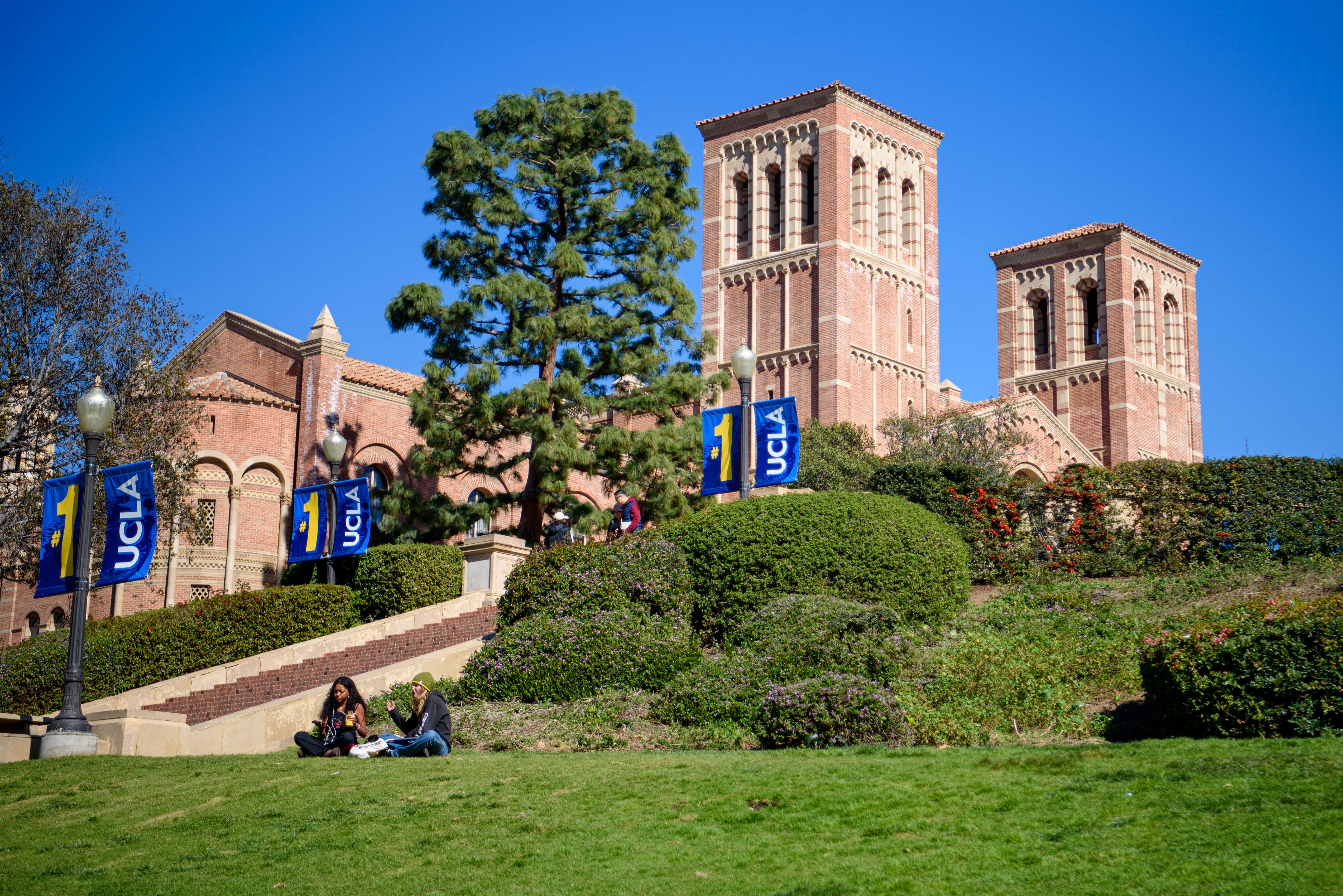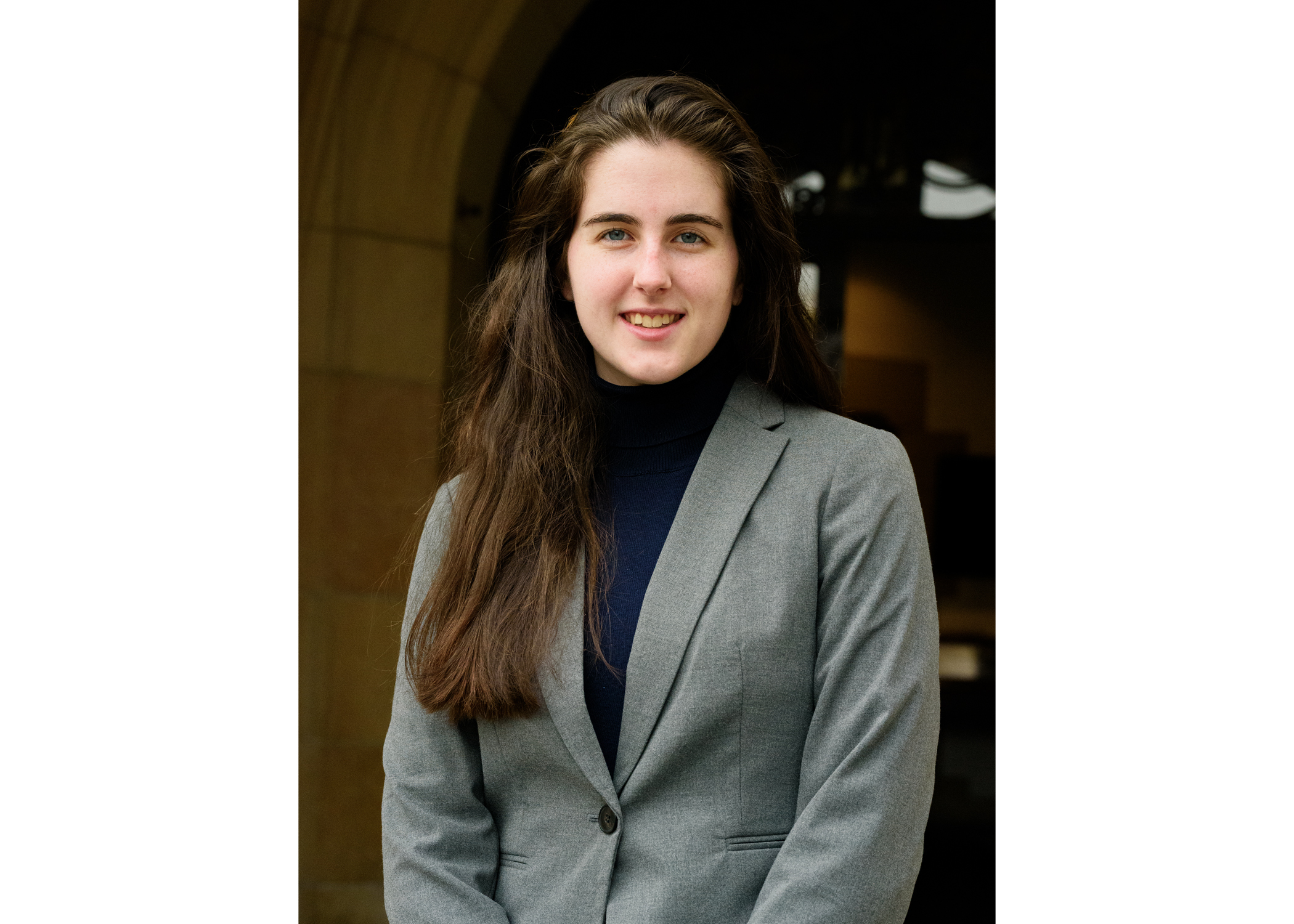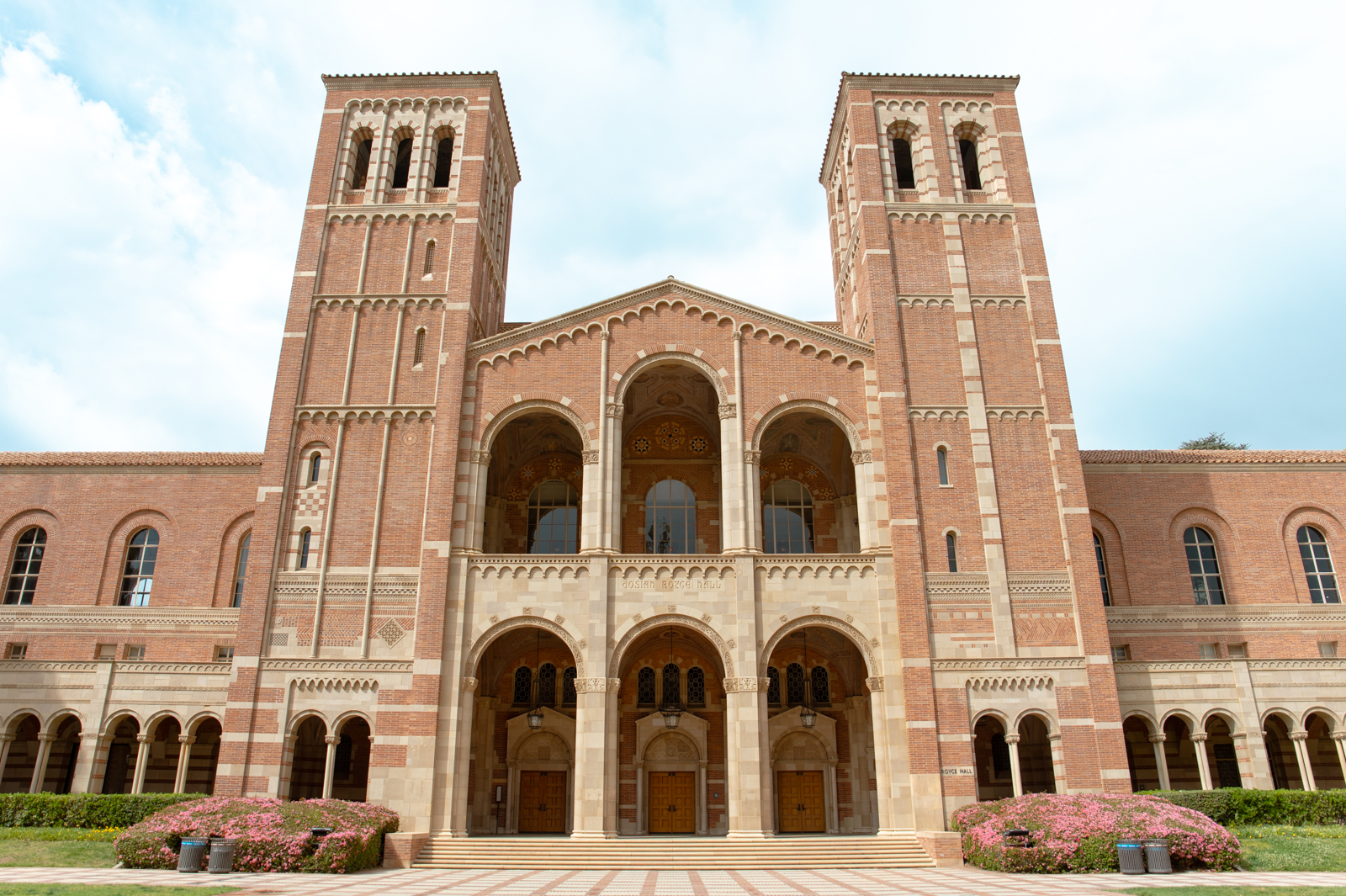Half of state’s high school graduates qualified for UC, California State admission
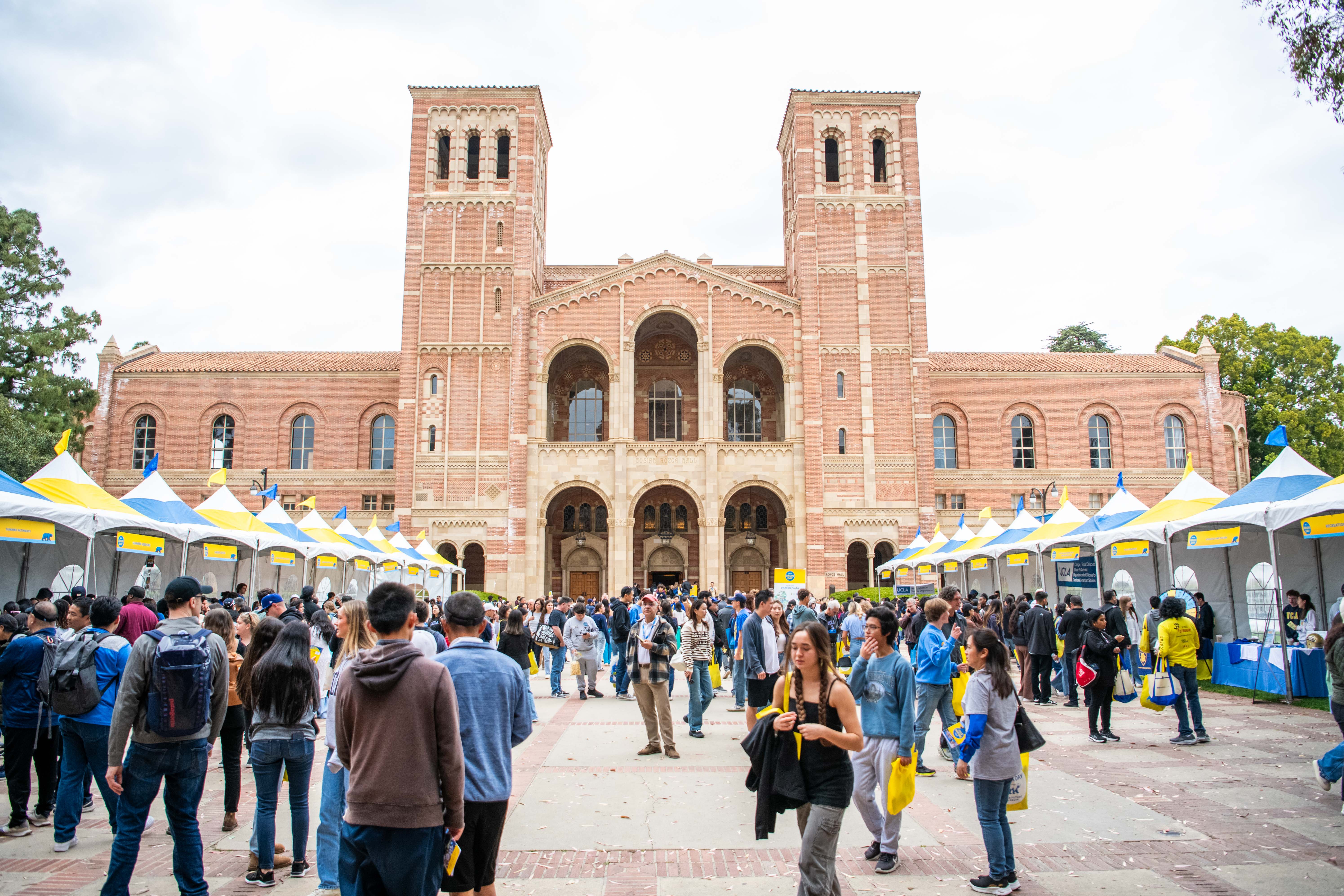
Pictured are prospective students and community members at Bruin Day in front of Royce Hall. (Renee Rubanowitz/Daily Bruin)
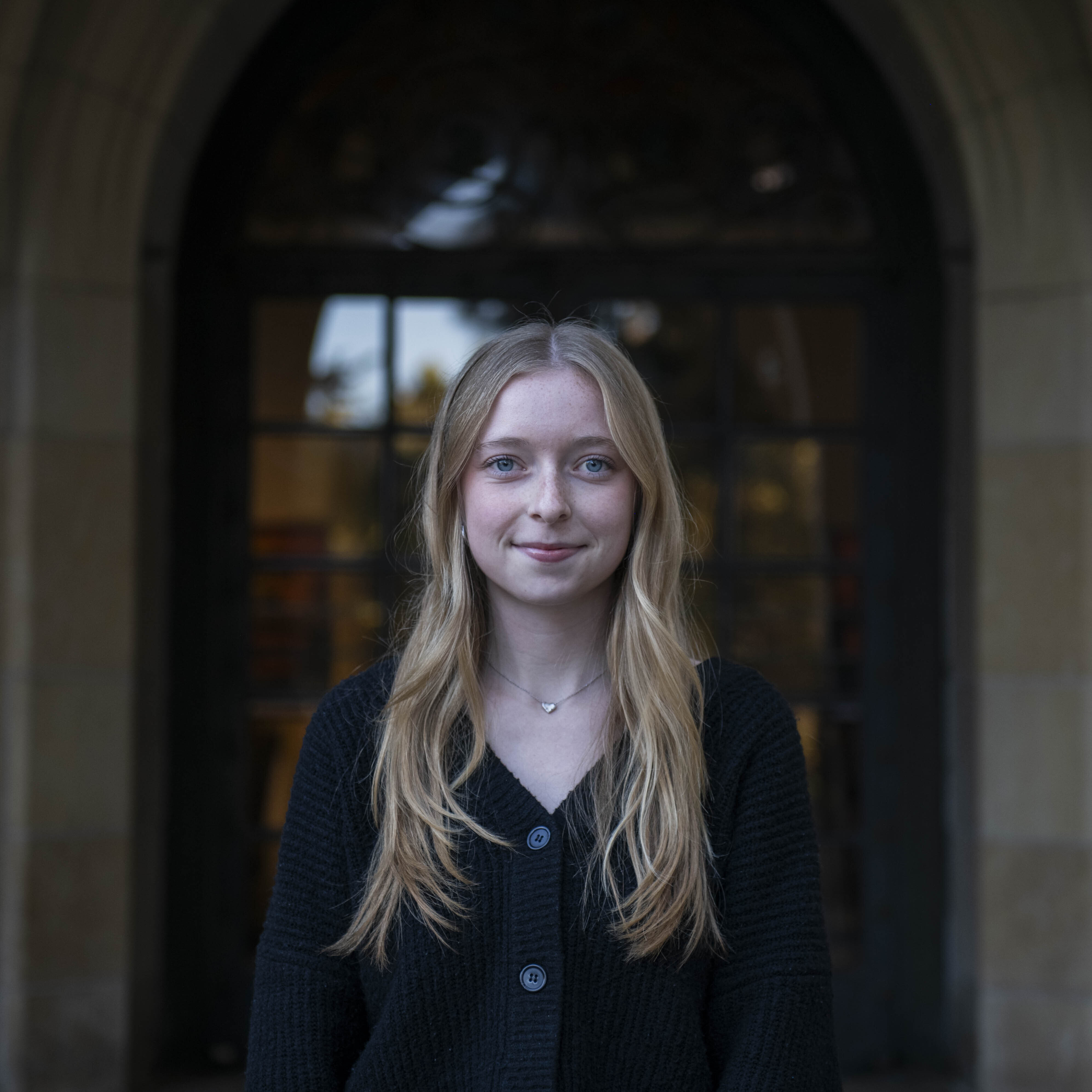
By Vivian Stein
May 10, 2024 11:00 a.m.
About half California’s high school graduates qualified for admission to UC and California State University campuses in 2023, according to data from the state.
According to the California Department of Education, 223,727 students – about 52.4% of all high school graduates – qualified for admission to UC or CSU campuses. While factors considered for admission to California’s public four-year colleges include personal statements and extracurricular activities, the bare minimum for admission is the completion of a specific set of high school classes, labeled A-G requirements.
These prerequisites currently include at least four years of English, three years of math, two years of history, two years of science, two years of a world language, one year of a performance or visual art and one year of a college-preparatory elective.
Since four-year colleges have historically targeted high school students as admits, undergraduate institutions have played a role in developing high school curricula for a long time, said Ozan Jaquette, an associate professor of higher education.
“I think from that perspective, the role of CSU and UC having these A-G requirements is trying to pull up the level of rigor and excellence that all California students have an opportunity to experience,” he said.
Jaquette added that the requirements can serve as a barrier for students in lower-income high schools from enrolling in prestigious public universities.
High schools don’t always offer the same courses, nor the same quality in which they are taught, said Gary Orfield, a distinguished research professor in education, law, political science and urban planning. Students taking the same class in school districts with differing financial resources can have varying degrees of preparedness, he added.
“There are a lot of high schools that are dead ends, that don’t prepare students for college, don’t have the necessary courses,” Orfield said. “Even if they have the necessary courses, they’re not taught at a really good precollegiate level.”
California Department of Education Communications Director Alex Traverso, said in an emailed statement that since Gov. Gavin Newsom’s election to office in 2018 and 2022, he has helped direct resources for California’s K-12 education, including funds to aid post-pandemic learning loss.
A 2016 report from the Public Policy Institute of California found that 43% of 2015 high school graduates completed the necessary A-G requirements to qualify for many of California’s public schools. In 2021, over $500 million was allocated to the A-G Completion Improvement Grant to improve A-G access, with a distinctive focus on Local Education Agencies with completion rates lower than 67%, Traverso said in the statement.
“For the class of 2023, 52.4% of high school graduates completed the A-G requirements. So, steady progress is being made,” he said in the statement.
Traverso said the Newsom Administration is conducting regional meetings to hear interest holders’ feedback about defining problems and creating solutions for career education. Topics have included dual enrollment in California Community Colleges and A-G completion, he added.
Orfield said implementing dual enrollment opportunities, in which a student takes college-level coursework alongside regular high school classes, could help students from low-income high schools meet four-year college requirements.
Orfield added that unequal college preparation opportunities are linked to a hierarchical higher education system. He said that in one of his studies, he found that of 116 California Community Colleges, there were only five with a significant number of students from high-poverty areas transferring to a four-year college.
“Much more than the admissions problem is the preparation problem and the financing problems,” Orfield said. “Those are the walls around opportunity. We have just incredibly segregated, extremely unequal schools in California.”
Jaquette said he found from a wealth standpoint, selective universities target affluent communities, as these institutions often look for households that can pay higher tuition fees.
While many public universities, such as UCLA, are need-blind, meaning financial status does not play a direct role in admission, many other prestigious colleges do prioritize wealthier students. This is particularly due to the fact that students from more affluent backgrounds are more likely to have legacy status, athletic opportunities and nonacademic extracurriculars than students from lower-income backgrounds.
“Effort to increase the number of students that meet the standards, in theory, would pay off and increase enrollments,” Jaquette said. “Especially if it’s tied to giving students need-based financial aid that can help them afford the cost.”
Additionally, some low-income students choose to attend geographically further high schools that better prepare them for college than closer school districts, Orfield said. Policies that aid these students in paying for transportation to and from these schools is another step that could be taken.
“It’s really important for people who go to UCLA to understand the extreme good fortune that’s their lives,” Orfield said. “It’s my absolute conviction that there’s a student in every small neighborhood that’s capable of going to UCLA or Harvard or any place. But whether you get onto a path that makes it possible for you depends a lot on where you live, what color you are, how much money your family makes, and that’s immoral for our educational system and really dangerous for our society.”


